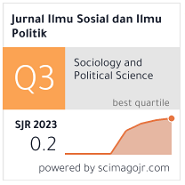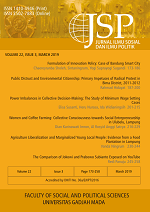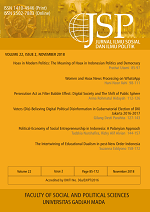Optimising Community-Based Forest Management Policy In Indonesia: A Critical Review
https://doi.org/10.22146/jsp.10906
Lucas Rumboko
(1*) , Digby Race
(2) , Allan Curtis
(3)
(1) Center for Climate Change and Forest Policy Research and Development (FORDA)
(2) Charles Sturt University
(3) Charles Sturt University
(*) Corresponding Author
Abstract
Community-based forest management (CBFM) is a popular concept in many countries, covering over 400 million hectares worldwide. In Indonesia, CBFM is viewed as an important component of the forestry sector with the government’s goal to establish 5.6 million hectares of CBFM by 2011 (twice the area of industrial plantation forests). The Indonesian government is pursuing CBFM as a strategy to reduce deforestation of tropical forests, to alleviate poverty in rural communities, and to contribute timber supplies to the processing industry.
Keywords
community-based forest management; poverty; participation; forest policy; CBFM; kemiskinan; partisipasi; kebijakan kehutanan
DOI:
https://doi.org/10.22146/jsp.10906
Article Metrics
Abstract views : 2298
|
views : 1945
Refbacks
There are currently no refbacks.
Copyright (c) 2016 Jurnal Ilmu Sosial dan Ilmu Politik
<div class="statcounter"><a title="Web Analytics" href="http://statcounter.com/" target="_blank"><img class="statcounter" src="//c.statcounter.com/10932543/0/2e122c85/0/" alt="Web Analytics"></a></div> <div class="statcounter"><a title="Web Analytics Made Easy - StatCounter" href="http://statcounter.com/" target="_blank"><img class="statcounter" src="//c.statcounter.com/10932543/0/2e122c85/0/" alt="Web Analytics Made Easy - StatCounter"></a></div> View My Stats






















